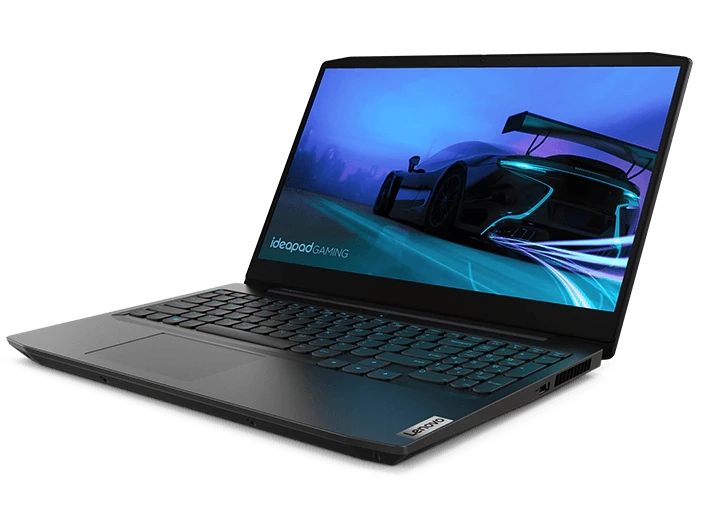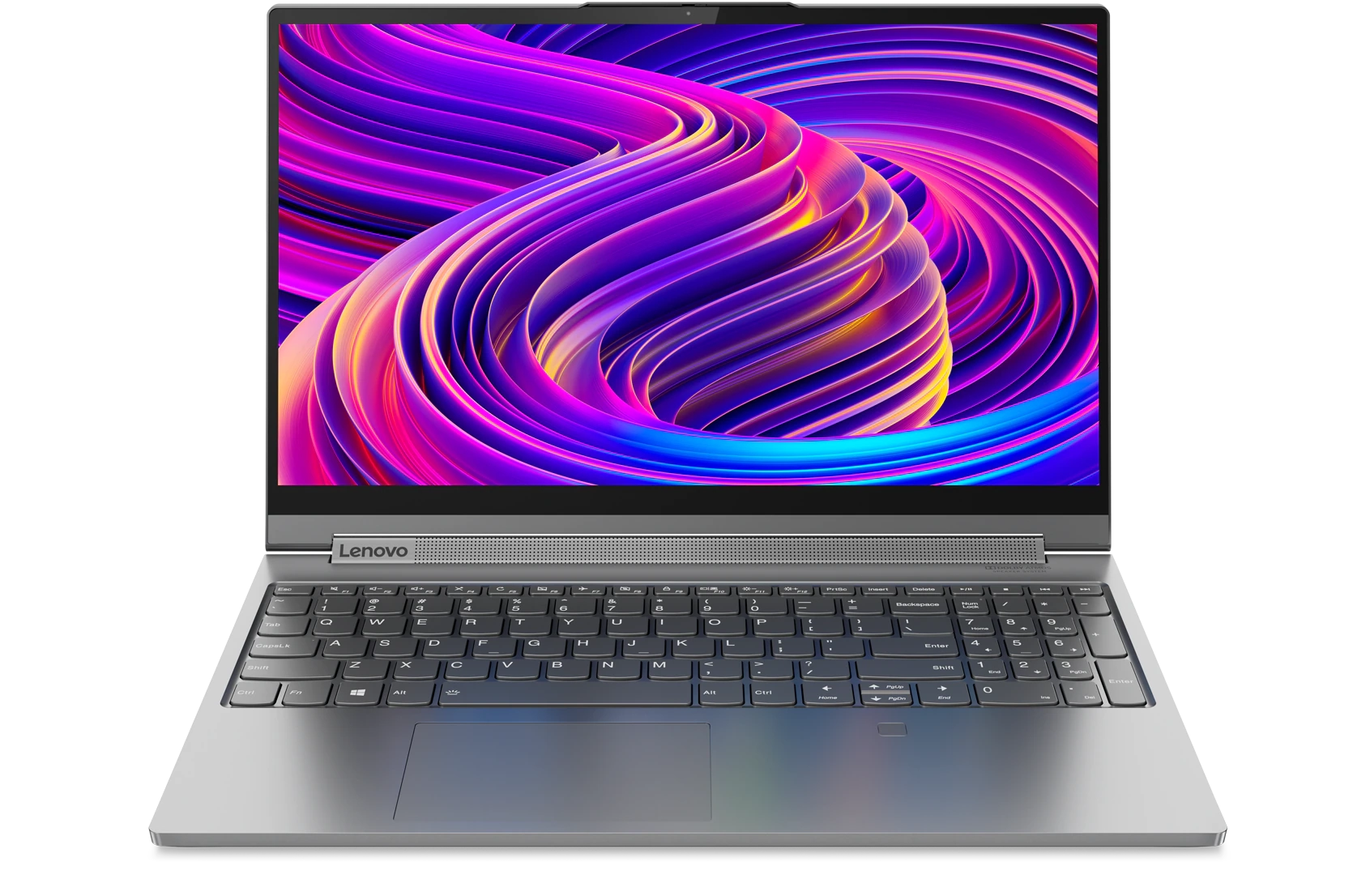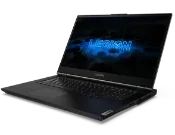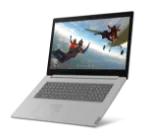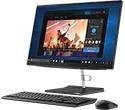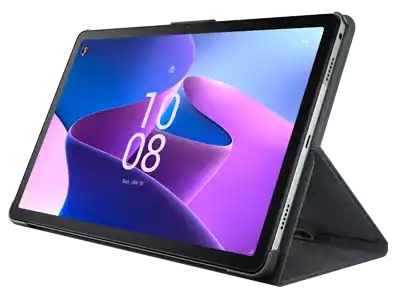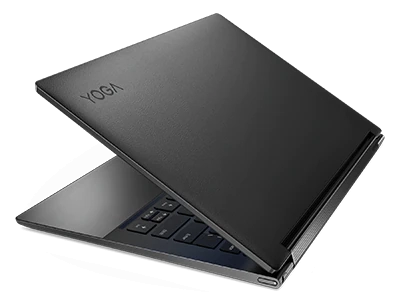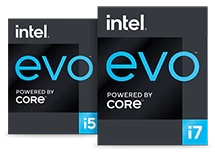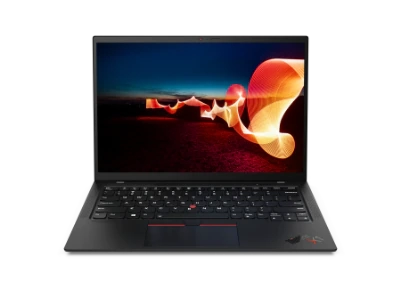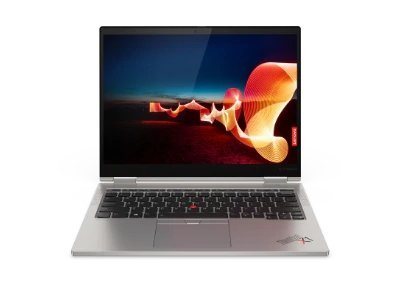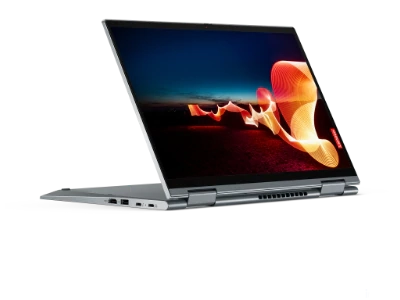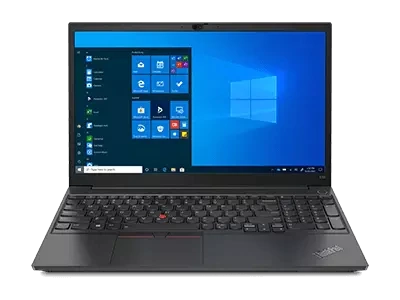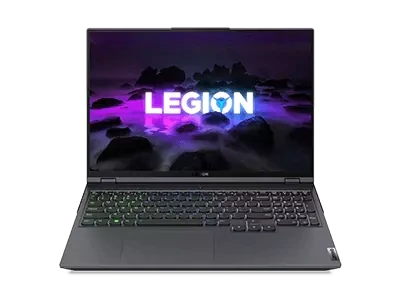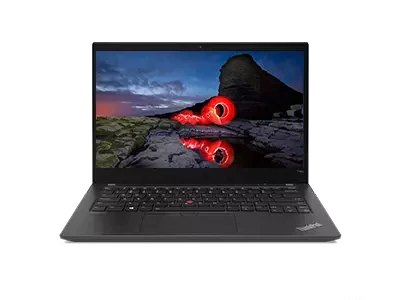Intel 11th Generation Core Laptop Processors (U Series)
The first 11th generation Intel® Core™ processors hit the market in late 2020. Along with the new CPUs came a new Intel graphics technology – Intel® Iris® Xe – and a new mobile platform concept, called Intel® Evo™, that the company says will help laptop buyers easily identify systems built for high performance in real-world conditions.
Intel’s initial 11th gen mobile CPUs (U Series), boasted up to 4.8 GHz turbo clock speeds using the company’s new SuperFin transistors. They also featured a number of what Intel called “industry-first” and/or “best-in-class” features: Intel® Wi-Fi 6 (Gig +), Thunderbolt™ 4, a CPU-attached PCIe Gen4 interface, and more.
In terms of performance, Intel says its 11th gen mobile U Series processors deliver impressive results:
- Up to 2.7x faster content creation1
- More than 20% faster office productivity2
- More than 2x faster gaming plus streaming3
In conjunction with Intel’s 11th gen releases, major PC manufacturers around the globe announced their first laptops and 2-in-1s with the new CPUs. At Lenovo, that honor went to the Lenovo Yoga 9i – a new high for the renowned Yoga series of flexible laptop/tablet combos – with more Lenovo laptops with 11th generation Intel processors to come.
New naming convention for Intel 11th gen mobile chips
Before proceeding, it’s worth noting that with its new 11th generation processors, Intel changed the way it identifies which of its Core chips are built for everyday laptops versus which ones are designed for use in thin and light models. [The tighter confines and smaller batteries of thin and light models mean their CPUs must operate while consuming less power (and generating less heat) than comparatively thicker, heavier laptops.]
Formerly, Intel used U Series (as in i3-10110U) and Y Series (i5-10310Y) to distinguish its mainstream mobile CPUs from its low wattage ones, respectively. Now, its 11th gen mobile chips identify low wattage CPUs (7W-15W) with a SKU (the first four numbers after the hyphen) ending in 0, as in i7-1160G7. Higher wattage models (12W-28W) use a 5 at the end of the SKU (for ex., i5-1135G7). The Y Series designator has been retired, with the new 11th gen mobile chips split into a high-wattage “UP3’ class and a low-wattage “UP4” class (see Table 1).
In another nomenclature change, recent Intel Core processors now use the final two characters of each product number to identify if the CPU has integrated graphics (G) and, if so, how advanced they are (1-7).
Intel Iris Xe graphics and Intel Evo platform
When Intel launched its 11th generation mobile processors in late 2020, it did so with two big additions: Intel Iris Xe graphics and the Intel Evo platform. Let's take a deeper look at each.
What are Intel Iris Xe graphics?
Intel says its new Iris Xe graphics give thin-and-light laptops the visual performance of systems with discrete or dedicated graphics – even when used within Intel's longstanding integrated processor-graphics architecture. [The first Gen 11 CPUs came with integrated Iris Xe graphics. However, in a big switch for Intel, discrete Intel GPUs using Iris Xe technology are anticipated at a later date.]
With Iris Xe, Intel is positioning its 11th gen mobile chips as ideal for video gamers, content creators and other laptop users with high graphical demands. Traditionally, these users have found thin and light laptops to be unpopular, as their small frames make it harder to keep CPUs cool and to fit batteries with long unplugged times.
Iris Xe graphics offer more and faster execution units (EUs) and a much bigger L3 cache compared to earlier Intel solutions. Some AAA games with the most extreme frame rates might still be out of reach of these integrated chips, but experts who reviewed the new 11th gen models said Iris Xe graphics are plenty powerful enough for most popular games, even when the laptop isn't running at its highest possible graphics settings.
Intel included Iris Xe graphics on its first 11th gen Core i5 and Core i7 processors, but not the 11th gen Core i3 ones, which still sported Intel UHD Graphics.
What is the Intel Evo platform?
The launch of 11th gen CPUs coincided with the introduction of the Intel Evo platform – a new set of specifications and "key experience indicators" (KEIs) that Intel says will help consumers identify the "best laptops for getting things done."4 Evo, an evolution of Intel’s earlier Project Athena, is another example of Intel working with PC manufacturers to push new laptop designs and capabilities based on its technology. It’s similar to when Intel unveiled "Ultrabook" specs to define a new group hyper-thin, highly powerful laptops.
In terms of components, the Intel Evo platform is based mostly on the company's 11th gen Core processors and its new Intel Iris Xe graphics. But it goes farther than that, imposing (and verifying) KEI targets aimed at ensuring consistent high performance in the areas Intel believes laptop users value most:
- Consistent responsiveness while on battery power5
- Fast wake-from-sleep: Under 1 second
- "Real world" battery life: 9+ hours6
- Fast charging: 4-hour charge in under 30 minutes7
Earning the Intel Evo badge also requires best-in-class wired and wireless connections8 – integrated Thunderbolt™ 4 and Intel Wi-Fi 6 (Gig+) – along with a high-end display (12- to 15-inch FHD) and advanced audio and webcam capabilities.
Lenovo announced its first laptop built on the Evo platform – the Lenovo Yoga 9i – in late 2020. Additional Yoga models were announced then, too, with more 11th gen-powered Lenovo laptopsto come. (NOTE: Not every 11th gen-equipped system meets the strict Evo standards).
11th gen Intel Core U Series laptop processor features
You’ll find multiple innovations in laptops equipped with these new Intel Core CPUs. See Table 1 for the notable performance features of 11th gen Intel Core U Series mobile processors.*
Table 1: Intel 11th generation (Tiger Lake) U Series laptop processors – Performance features9,10
| Feature |
11th Gen (Tiger Lake)
Intel Core UP3 Series |
10th Gen (Tiger Lake)
Intel Core UP4 Series |
| CPU/Memory/Graphics Overclocking |
No |
No |
| Intel® Extreme Tuning Utility (XTU) |
No |
No |
| Intel® Hyper-Threading |
Yes |
Yes |
| Intel® Smart Cache (with Last Level Cache (LLC) sharing (processor and graphics)) |
Yes |
Yes |
| Intel® Smart Sound |
Yes |
Yes |
| Intel® Gaussian Neural Accelerator (GNA 1.0) |
Yes |
Yes |
| Intel® Turbo Boost 2.0 |
Yes |
Yes |
| Intel® Turbo Boost Max |
No |
No |
| Intel® Speedshift™ |
Yes |
Yes |
| Per core p-states |
Yes |
Yes |
| Last Level Cache (LLC) |
Up to 12M |
Up to 8M |
* The table lists the announced performance features of the first 11th generation Intel Core U Series mobile processors to be released. Not every 11th gen Intel mobile CPU is available in Lenovo laptop systems. Before buying, consumers should always confirm the stated specifications and features of the systems they’re considering.
Comparing 11th generation Intel Core U Series processors
The initial launch of Intel’s 11th generation mobile CPUs covered the Core i3, Core i5 and Core i7 series. Table 2 compares the first 11th gen Intel Core U Series laptop CPUs to be released.**
Table 2: 11th generation (Tiger Lake) Intel Core U Series laptop processors – Comparison11
| Feature |
11th Gen Intel Core i7
U Series mobile CPUs |
11th Gen Intel Core i5
U Series mobile CPUs |
11th Gen Intel Core i3
U Series mobile CPUs |
| Base Processor Frequency |
Up to 3.0 GHz |
Up to 2.4 GHz |
Up to 3.0 GHz |
| Max. Turbo Frequency (single core) |
Up to 4.8 GHz |
Up to 4.2 GHz |
Up to 4.1 GHz |
| Max. Turbo Frequency (all cores) |
Up to 4.3 GHz |
Up to 3.8 GHz |
Up to 4.1 GHz |
| Number of Processor Cores/Threads |
4/8 |
4/8 |
4/8 |
| Intel® Smart Cache Size |
12 MB |
8 MB |
Up to 8 MB |
| Graphics Dynamic Frequency (max) |
Up to 1.35 GHz |
Up to 1.30 GHz |
Up to 1.25 GHz |
** Any list of processor specifications by generation is time-specific. Newer, improved versions of each chip will likely be released later. So Table 2 is accurate as regards the first 11th gen mobile processors released by Intel. Consumers should always confirm the exact configuration and performance estimates before buying a system.
If you’re shopping for a new laptop, be sure to consider systems with 11th generation Intel Core processors, including the new Lenovo Yoga 9i 2-in-1. From Intel Iris Xe graphics to the Intel Evo platform, there’s a lot to like in these new laptops – even for demanding users such as video gamers and content creators.
1 Based on integrated Intel® Wi-Fi 6 (Gig+) and Thunderbolt™ 4 technology. Intel® Wi-Fi 6 (Gig+) products enable the fastest possible maximum speed for typical laptop Wi-Fi products. Thunderbolt™ 4 is the fastest port available on a laptop, at 40 Gb/s, as compared to other laptop I/O connection technologies including eSATA, USB, and IEEE 1394 Firewire*. Performance varies by use, configuration and other factors.
2 As measured by MLPerf v0.5 Inference with Offline Scenario using OpenVINO 2020.2 framework Closed ResNet50-v1.5 offline int8 GPU (Batch=32) on 11th Gen Intel® Core™ i7-1185G7 Processor vs OpenVINO 2020.2 framework Closed ResNet50-v1.5 offline FP32 GPU (Batch=32)
3 Verified, measured and tested against a premium specification and Key Experience Indicators as part of Intel's laptop innovation program Project Athena. Testing results as of August 2020, and do not guarantee individual laptop performance. Power and performance vary by use, configuration and other factors. For more complete information about performance and benchmark results, visit Intel.com/Evo
4 Measured by Project Athena laptop innovation program Key Experience Indicators and 11th Gen Intel® Core™ processor Representative Usage Guides. For more complete information about performance and benchmark results, visit www.intel.com/Evo and www.intel.com/11thGen.
5 Measured speed of premium Windows OS-based design while performing 25 workflows predictive of performance under a typical-use environment comprising multiple cloud-based and local apps and web pages including Google Chrome, Google G-Suite, Microsoft Office 365, YouTube and Zoom. Testing as of August 2020 conducted on laptops on DC battery ≥30%, connected to 802.11 wireless, and with shipped hardware configurations including Windows 10 and 250-nit screen brightness.
6 Time taken to drain from 100% to critical battery level while performing workflows under a typical-use environment, comprising multiple cloud-based and local apps and web pages including Google Chrome, Google G-Suite, Microsoft Office 365, YouTube and Zoom. Testing as of August 2020 conducted on laptops connected to 802.11 wireless, and with shipped hardware configurations including Windows 10 and 250-nit screen brightness.
7 Minimum charge attained in 30-minute window while powered off from OEM-default shutdown level. Performance varies by use, configuration and other factors. Testing as of August 2020.
8 Intel Wi-Fi 6 (Gig+) products enable the fastest possible maximum speed for typical laptop Wi-Fi products. Thunderbolt 4 is the fastest port available on a laptop, at 40 Gb/s, as compared to other laptop I/O connection technologies including eSATA, USB, and IEEE 1394 Firewire. Performance will vary depending on the specific hardware and software used. Must use a Thunderbolt-enabled device.
9 NOT ALL FEATURES INDICATED ARE SUPPORTED ON ALL SKUs.
10 Level of support may vary by SKU.
11 Intel technologies may require enabled hardware, software or service activation. Performance varies depending on system configuration. No computer system can be absolutely secure. Check with your system manufacturer or retailer or learn more at www.intel.com.
Intel, Intel Core, Intel Iris, Intel Evo, and Intel Speedshift are trademarks of Intel Corporation or its subsidiaries in the U.S. and/or other countries.


